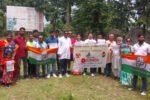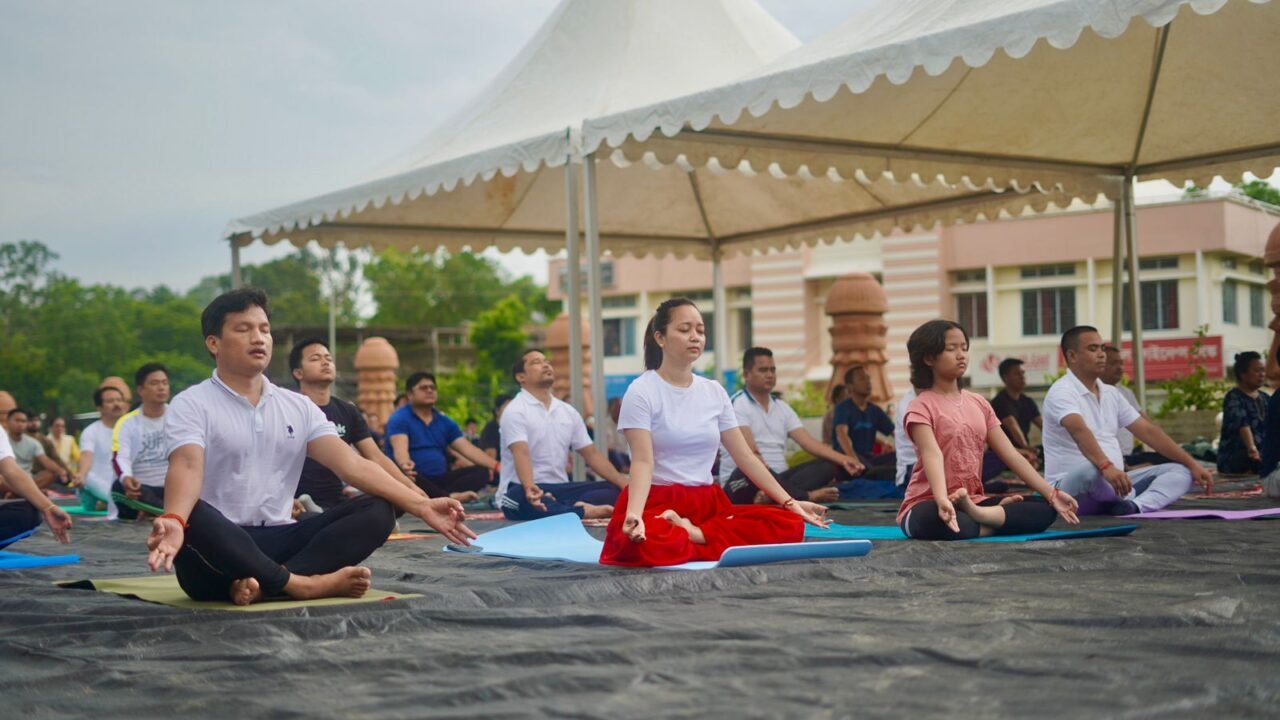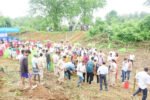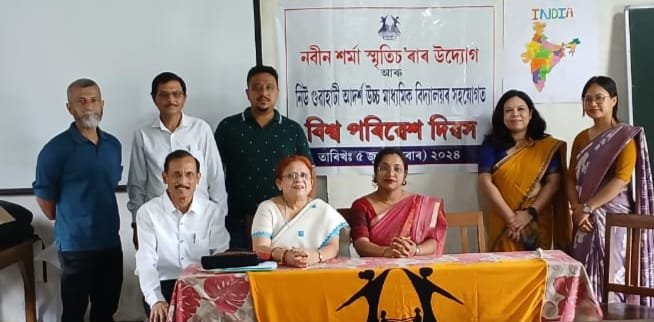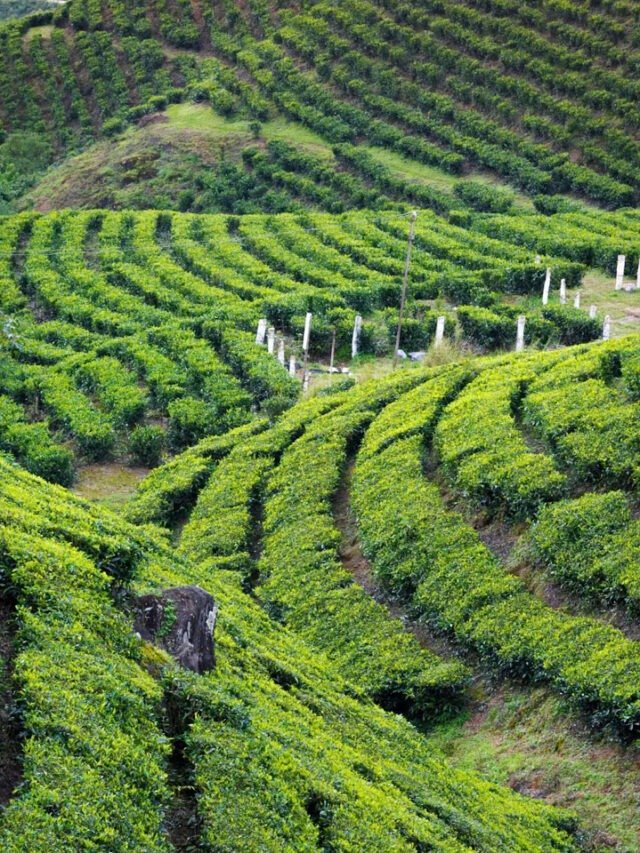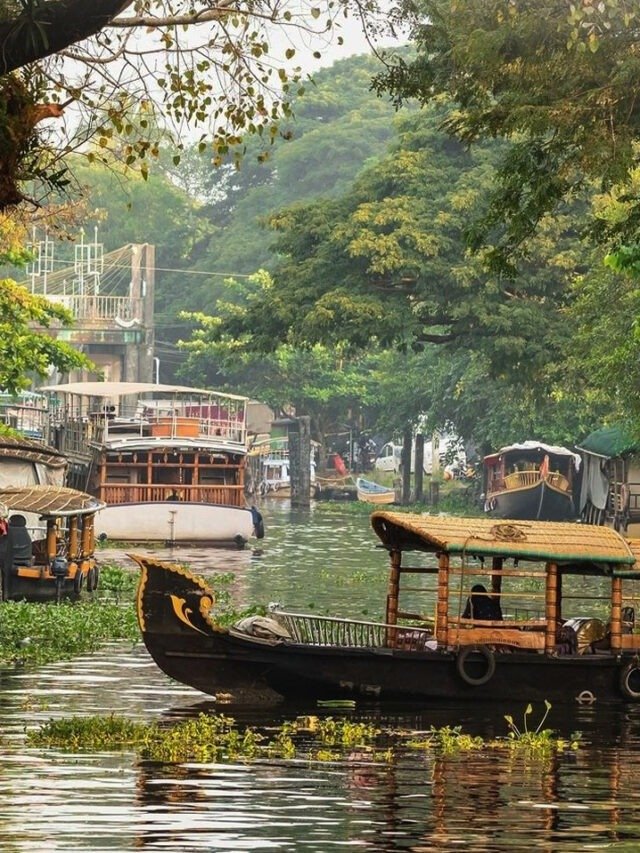HT Bureau
GUWAHATI, July 1: In a unique initiative aimed at promoting awareness and understanding of herpetofauna, leading biodiversity conservation organisation Aaranyak organised a ‘Herping’ session in Phumen Engti village of Karbi Anglong district, Assam.
Held on June 29, this marked the first such field programme of the year and was conducted with the active participation of students from various academic institutions.
According to an official statement, a total of 12 undergraduate and postgraduate students from the Zoology departments of Debraj Roy College in Golaghat, International School in Guwahati, and Arya Vidyapeeth College in Guwahati participated in the hands-on session.
The programme was designed to provide practical exposure to the study of reptiles and amphibians, while also fostering an understanding of the ecological and cultural context of biodiversity conservation in the region.
The session commenced with a classroom-style theoretical demonstration at the Aaranyak field station.
Dr Jayanta Kumar Roy, a herpetologist associated with Aaranyak, introduced the students to the basics of amphibians and reptiles, including their key identifying features and behavioural traits.
This was followed by an overview of field study methods and frog call identification techniques, conducted by Sourav Gupta, also from Aaranyak.
Following the instructional session, participants embarked on a guided field exercise that began from Phumen Engti village and stretched along the Langkiri River into the community forests of the Karbi Hills, covering approximately five kilometres.
As per the official statement, the students were able to appreciate the rich natural biodiversity of the area while also observing local practices such as jhum cultivation — a traditional form of agriculture practiced by the Karbi community.
They were also introduced to several wild edible plants, many of which are known for their medicinal properties.
The session continued into the evening with a night walk focused on amphibian and reptile observation.
Guided by local community experts Sanjib Bey and Bidyaram Tokbi, participants explored forest trails and riverine habitats near the village.
They observed and identified several species including the Red-eyed Frog (Ronga chakua beng), Indian Skipping Frog (Pani beng), Cricket Frog (Uisiringa beng), Assamese Cascade Frog (Axomiya nijora beng), as well as various reptiles such as bent-toed geckos, garden lizards, and skinks (Monikira).
The field walk provided students with the opportunity to recognise species both by appearance and sound, helping them understand the intricacies of herpetofaunal identification and habitat associations.
In addition to scientific exposure, the session also facilitated interaction with members of the local Karbi community who shared traditional conservation practices and ecological insights.
Through these interactions, students gained a deeper appreciation of the role indigenous knowledge plays in safeguarding biodiversity.
According to the statement, the initiative was aimed at fostering a holistic understanding of biodiversity that integrates both scientific inquiry and cultural perspectives.
Aaranyak expressed that such field-based educational activities play a vital role in building environmental consciousness among the youth while also empowering local communities through recognition of their traditional knowledge systems.
The programme is part of Aaranyak’s larger commitment to biodiversity conservation, ecosystem protection, and support for indigenous communities in the Kaziranga–Karbi Anglong and Manas landscapes.
These initiatives are supported by the International Union for Conservation of Nature (IUCN) – KfW and the US Fish and Wildlife Service.



